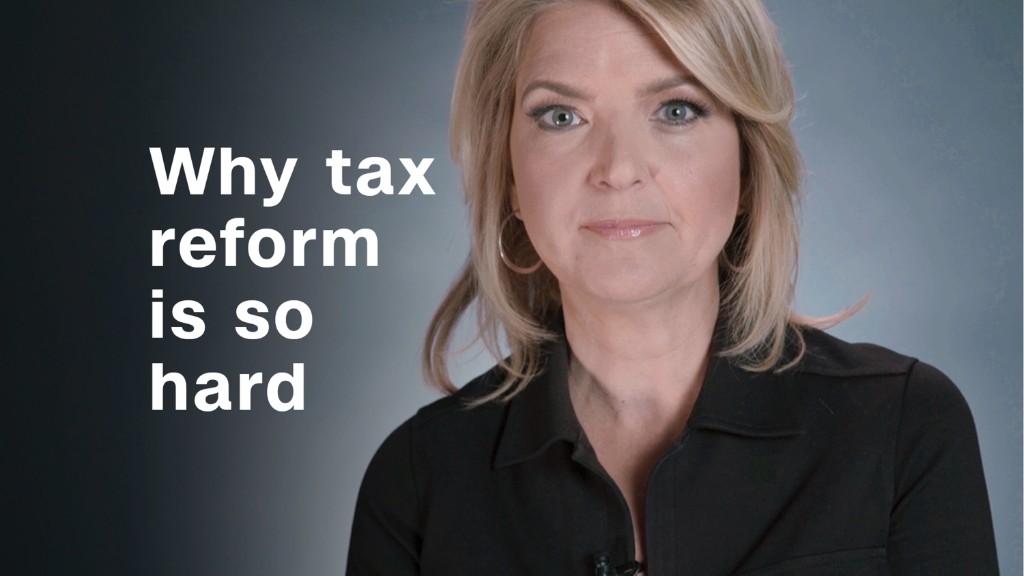
President Trump is once again expected to pitch his vision for tax reform in a speech in North Dakota on Wednesday.
He's not expected to offer details decided upon by the so-called Big Six group of tax negotiators, made up of top people in the administration and key Republicans in the House and Senate.
But senior administration officials told reporters that the tax reform the White House envisions would put money into workers' pockets in four ways.
1. A lower individual tax bill
Tax relief could take many forms.
"We want to give workers a direct pay raise, in the form of being able to keep more money in their pockets. So when you look at the individual tax rate, we'll start with that," the official said.
Previously, tax reform plans from Trump and House Republicans have included a doubling of the standard deduction.
But individual changes like a lower tax rate or a higher standard deduction won't necessarily translate into a lower tax bill for a middle-class worker if there are other measures that offset them.
For example, if your top tax rate is lowered somewhat but more of your income is assigned to that top rate, you may end up paying about the same as what you pay today.
Or if your rate is lowered but valuable deductions you take are repealed or reduced, your tax burden may not change, or it could increase.
Indeed, tax negotiators may be considering modifying the mortgage interest deduction, repealing the state and local tax deduction and "Rothifying" 401(k) contributions -- which would postpone your tax benefit until you take the money out in retirement rather than offering you an immediate deduction on contributions today.
2. Tax simplification
Trump has said he wants tax reform to make taxes "simple ... and easy to understand."
He and other Republicans say they want to reduce tax returns to a single page or even the size of a postcard.
If legislators do manage to truly simplify the tax rules and make it easier to calculate one's tax burden -- that could mean savings for taxpayers who might otherwise spend $100 or more every year to a tax preparer or tax preparation software.
3. A corporate rate cut
The Trump administration and Republicans want to lower the top corporate tax rate of 35%. How does that help workers?
The theory is that by lowering corporate taxes, companies will be more encouraged to do business in the United States and will have more money to invest, which can create jobs and higher wages.
Related: Who pays if Congress kills the state and local tax deduction
The officials on the call stressed what Treasury Secretary Steven Mnuchin has asserted many times -- that workers bear 70% or more of the corporate tax burden through lower wages, among other things. So, the thinking goes, lower that burden and more money is available to pay workers.
But many economists and tax policy experts estimate that the worker's share of the corporate tax burden is far below the 70% Mnuchin asserts, with some placing it between 19% and 25%.
What's more, corporate profits are already very high today and companies are holding a lot of cash on the sidelines. But that hasn't translated into notably higher wages.
4. Return of overseas corporate profits
Tax writers will aim to entice or compel U.S. multinationals to repatriate the profits they have already made overseas but never formally brought back to the United States.
They haven't done so, many argue, because the money would be taxed at 35% minus any tax already paid on those profits to foreign governments. So lawmakers might offer a one-time discounted tax rate to companies to bring their already-banked foreign earnings back.
Having a discounted repatriation rate, coupled with a lower corporate tax rate going forward, will be good for workers, the White House has argued, especially with respect to pensions. It will be "huge, huge, huge" as one official on the press call put it. "You'll see the S&P tick up really quick."
The idea is that retirement savings -- whether 401(k) funds or defined benefit plans -- own a large portion of the stock market, so as corporate profits and stocks rise, those accounts stand to benefit.
Gary Cohn, Trump's top economic adviser, points specifically to public servants. "They're the policemen, they're the firemen, they're the teachers, they're the civil servants of America today who have their money in public pension funds being managed in the U.S. equity market. We're helping Americans by delivering returns back to them," he told CNBC.
Critics note, however, that the ownership of stocks through retirement plans skews more heavily to the top 1% than it does to the middle class. So, to the extent gains are enjoyed, they would be enjoyed disproportionately by those most well off. For example, one study found the bottom 90% of households owned only 35% of pension account values in 2013.


